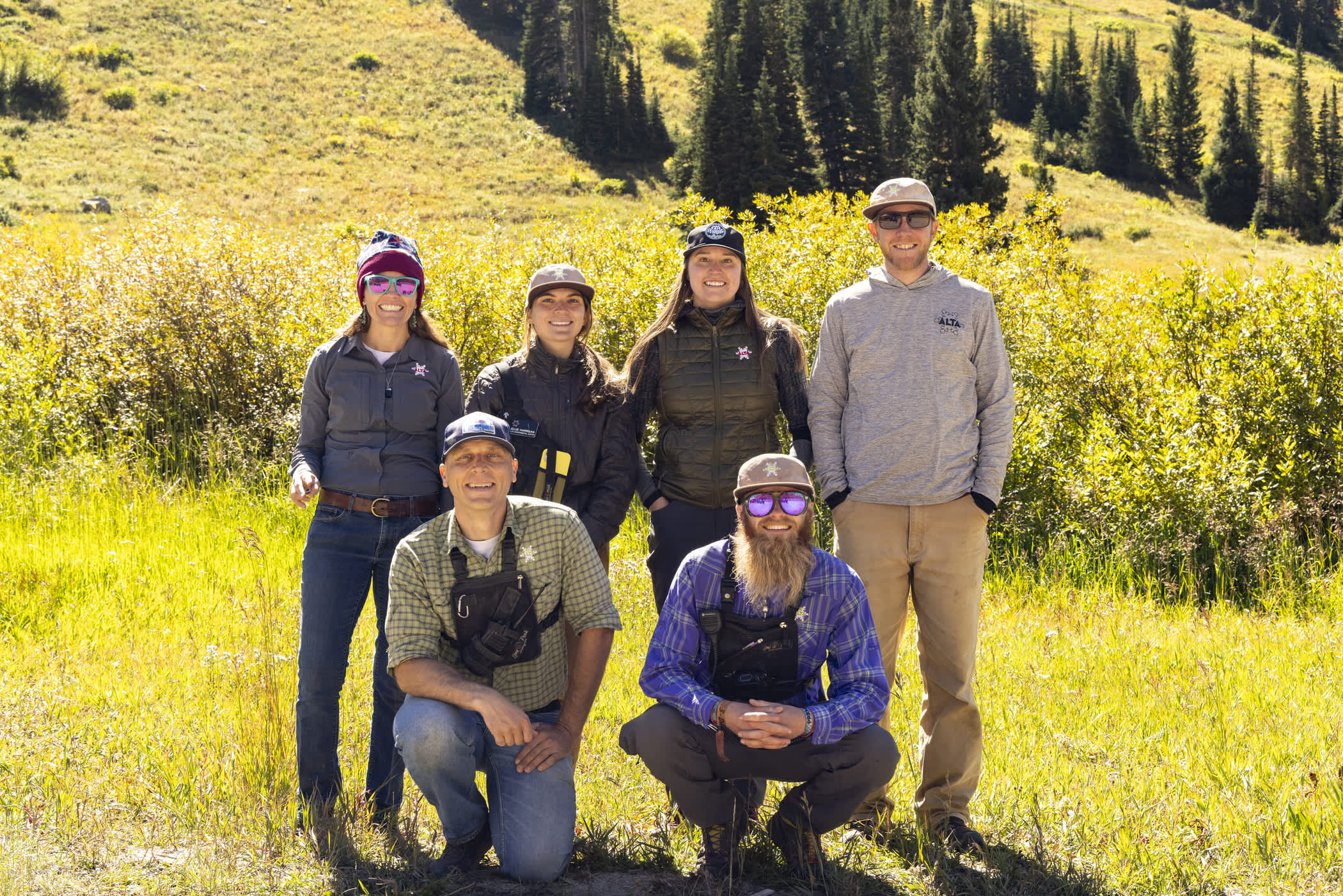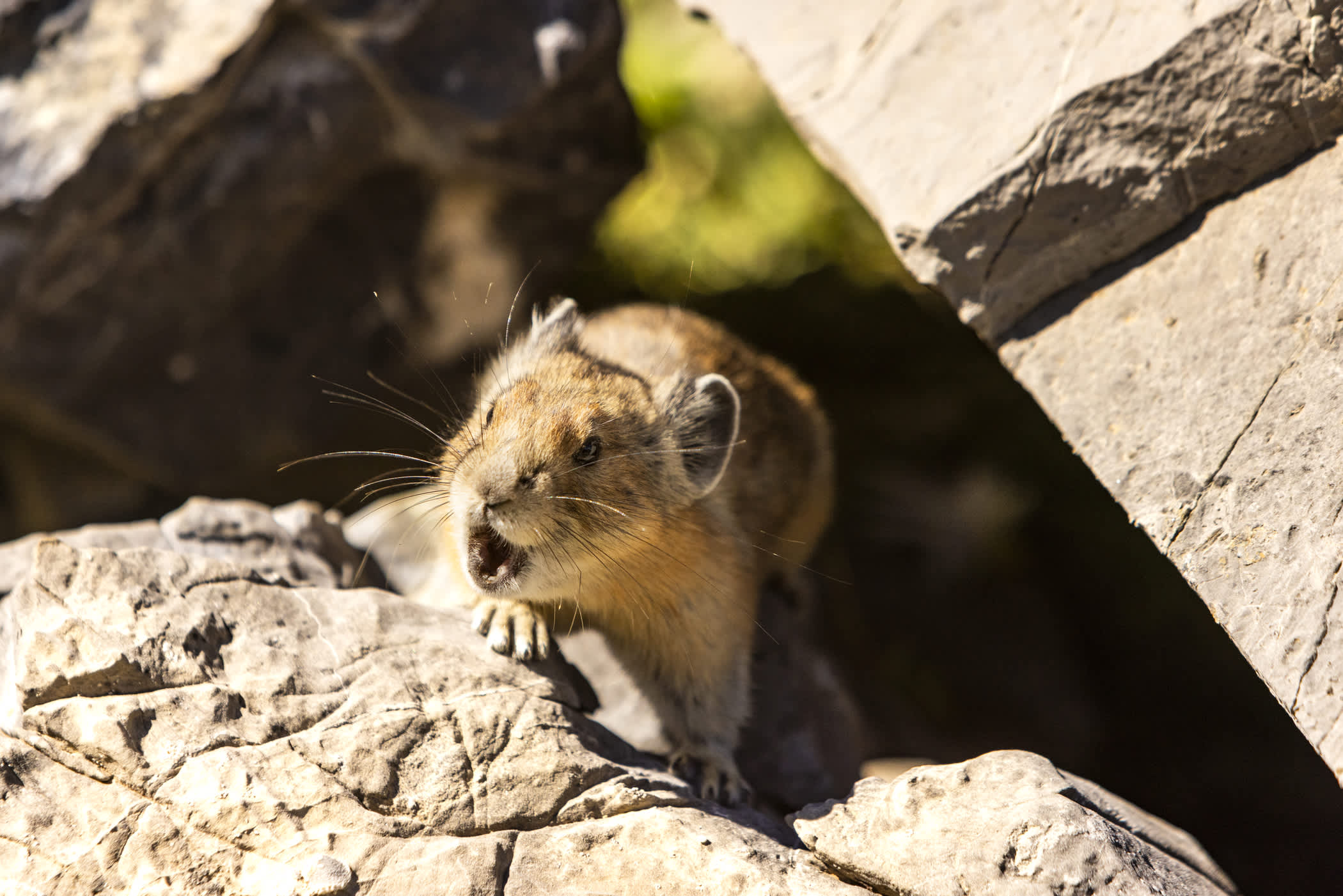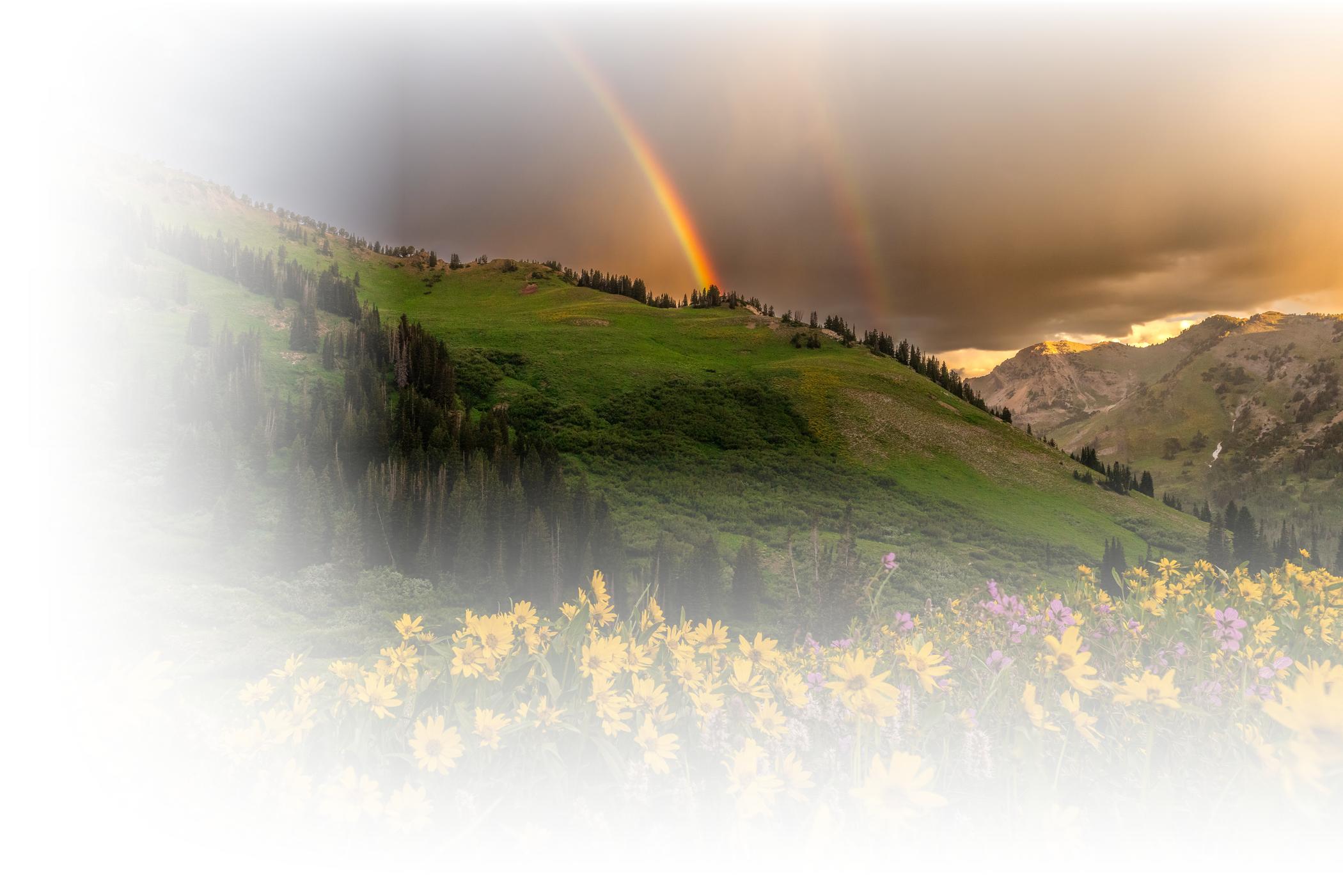ISSUE NO. 102
Download the Fall 2023 Newsletter
Our Team

Each summer, the Alta Environmental Center (AEC) welcomes four summer conservation team members. This group of passionate and dynamic individuals plays a vital role in our summer operations. We begin our days early in the morning and work well through the afternoon, managing a range of sustainability projects throughout the mountain. Projects include diligently planting native wildflowers and shrubs in areas that have been disturbed to restore ecological balance. These revegetation efforts are an enormous undertaking.
As the seasons shift from winter to summer, the AEC undergoes its own seasonal transition. In order to complete our summer restoration projects, our full-time team of two grows into a team of six.
This past summer, we planted 13,000 native wildflowers and shrubs. Despite the lingering snowpack and challenging weather, the team managed to get these plants in the ground ahead of schedule. In addition to these large-scale projects, the summer conservation team cares for our on-site tree and plant nursery, nurturing the growth of native species that are vital to our revegetation efforts.
The AEC team is also responsible for managing invasive and noxious weeds throughout the ski area. This task involves surveying and hand-pulling weeds from 75 acres of land. Another 25 acres are managed by Friends of Alta and Cottonwood Canyons Foundation. Year over year, we have measured significant decreases in the overall presence of invasive species here at Alta. In between vegetation management, the AEC and Cottonwood Canyons Foundation also care for the network of trails at Alta throughout summer and fall.
During the winter months, you can find our summer conservation team working for Alta’s parking crew department, the Albion Grill and Baldy Brews. Ellie, the AEC Outreach Coordinator, and Jennifer, the AEC’s Director, spend the snowy months managing Alta's food waste program and running winter education events.
Without our dedicated summer conservation team, we could not complete these large-scale projects. We are so thankful to have this hard-working crew and their efforts to help protect this beautiful landscape we operate in.

AEC watering the on-site plant nursery (left) and team members organizing seedlings to be planted throughout the summer (right) | Photo: Tyler Struss
Nature Nugget: American Pika

Hidden in the rugged and breathtaking landscapes of North America’s western mountains lies a creature of remarkable resilience and charm - the American pika (Ochotona princeps). The pika plays a vital role in its alpine habitat, serving as an “ecosystem engineer” by foraging for shrubs and wildflowers in the summer.
Foraging helps promote the diversity and distribution of various plant species in the warmer summer months, without the Pika, Alta’s density and diversity of flora may not look as dramatic.
American pikas are small, rabbit-like mammals that you can find along the Devil Castle Loop or perched along Cecret Lake in talus fields and rocky slopes. Their rocky habitats provide both shelter and sustenance, allowing them to endure frigid winters without hibernating. From the warmth of their underground burrows, Pikas are able to remain active throughout the winter. You might have seen these hardy creatures with tufts of grasses in their mouths that they are using to create these warm burrows. These serve as both shelter and insulation, protecting them from extreme cold. Pikas even have specialized thermoregulation mechanisms, allowing them to maintain a stable body temperature in their homes under the snow. The American pika is a testament to the tenacity and adaptability of life in extreme environments.
Important dates
- September 17th – Albion Basin Campground Closing
- October 10th – Summer Road Closing
- October 19th – Birding Hikes with Tracy Aviary
“To see the greatness of a mounatain, one must keep one’s distance;
To understand its form, one must move around it;To experience its moods, one must see it at sunrise and sunset,
At noon and at midnight, in sun and in rain, In snow and in storm, in summer and in winter And in all the other seasonsHe who can see the mountain like this comes near to the life of the mountain. Mountains grow and decay, they breathe and pulsate with life. They attract and collect invisible energies from their surroundings The forces of the air, of the water, of electricity and magnetism;
They create winds, clouds, thunderstorms, rains, waterfalls And rivers. They fill their surroundings with active life and give shelter and food to innumerable beings. Such is the greatness of mighty mountains.”
- Lama Govinda


Add Your Comment